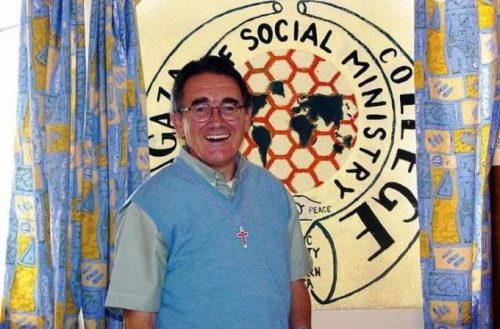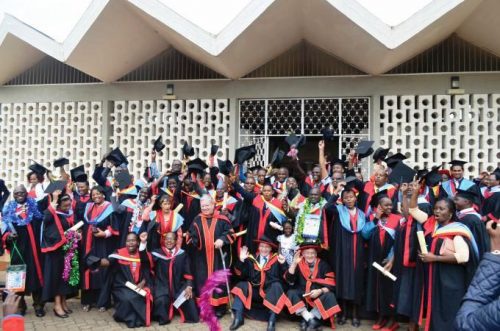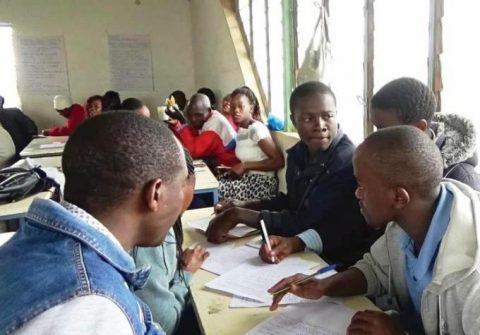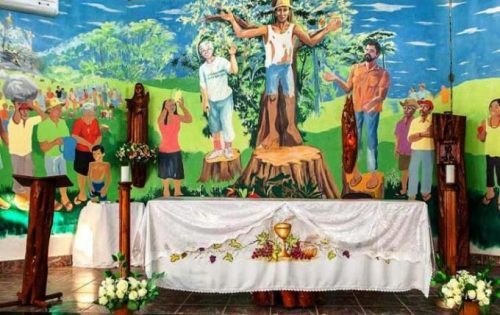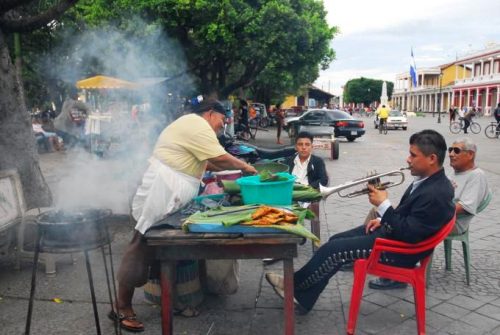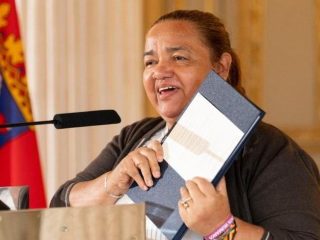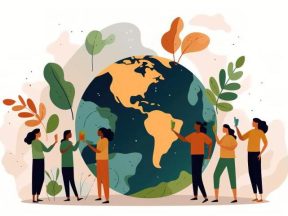President Trump’s statements concerning a proposal to purchase Greenland from Denmark were met with derision throughout the Western world, especially in diplomatic and journalistic circles.
Other pundits even described such plan as a sign of his supposed ‘megalomania.’ Trump’s peculiar style is certainly unorthodox: his inflammatory tweets, his frequent disdain for some traditional American allies, and his willingness to disregard multilateral institutional frameworks often fuel criticism from various flanks.
However, a closer look based on a dispassionate perspective reveals that Donald Trump’s foreign policy is generally consistent with the classical dictates of realpolitik. His assertiveness towards China (likely the heaviest strategic rival of the US) and Iran (a disruptive power which seeks regional hegemony in the Greater Middle East), his attempts to disengage from dangerous operational theaters where no vital US interest is directly at stake, his encouragement of a stronger US presence in outer space and his blunt moves to reshuffle transatlantic relations according to the parameters of the Post-Cold War era all make sense from a long-range geopolitical viewpoint.
Trump’s policies contrast starkly to both George W. Bush’s ambitious neoconservative crusade and Barrack Obama’s commitment to liberal institutionalism. It can be argued that both of these previous approaches were likely derived from ideological notions related to the so-called ‘unipolar moment.’ It is also noteworthy that the legendary Henry Kissinger – a prominent American geostrategist famous for arguing that statecraft must be formulated based on calculations conceived to favor the national interest in the global balance of power – is one of Trump’s closest foreign policy advisers, even if he holds no official position in the administration. This is the context in which the US interest in Greenland must be understood. The issue goes well beyond the realm of real estate deals or improvised grandiose ambitions. In fact, its ramifications are profound in terms of grand strategy.
According to the CIA World Factbook, Greenland’s territory covers slightly more than 2 million square kilometers – this makes it larger than Mexico – most of which is covered by ice. Moreover, with nearly 60,000 inhabitants, its population is remarkably small; it amounts to almost half that of Berkeley, a Californian college town.
Furthermore, since Greenland’s economy is scarcely diversified, it depends mostly on primary activities like fishing. In terms of GDP, Greenland is behind jurisdictions like Tajikistan, Suriname, Montenegro, Barbados, Aruba and Guyana. In other words, Greenland is far from being an economic heavyweight. Therefore, it is pertinent to wonder why it is being coveted by the current US president.
In order to understand why Greenland represents an attractive asset, one must bear in mind that –due to its relative permanence in time – geography is arguably the most important factor which determines the behavior of international political dynamics. This is the core premise of geopolitical thinking. Hence, the close proximity of Greenland to North America, Scandinavia, and the Arctic is geostrategically significant. In fact, Greenland was the first island of the American hemisphere settled by European colonizers (Norse seamen), several centuries before Columbus arrived in the Caribbean Sea in 1492.
However, establishing a meaningful permanent presence in Greenland is notoriously difficult. Deep tundra is one of the planet’s most hostile biomes for human survival, let alone economic development or conventional military mobilizations. It is simply impossible to live under such harsh conditions without heating, reliable supplies, and special gear. Also, the island’s lack of critical infrastructure represents a formidable structural challenge.
Nevertheless, the melting of polar ice sheets – a result of global climate change – could represent a game-changer. If this long-term trend accelerates in the foreseeable future, then it would be feasible to tap into Greenland’s rich mineral deposits. According to some sources, these resources include ferrous metals, uranium, and rare-earth elements, which are vital for several key productive sectors of the so-called ‘Fourth Industrial Revolution’ and – perhaps more importantly – also for manufacturing high-tech military hardware like lasers, naval sonar systems, nuclear weapons, guided missiles, radars, satellite communications, advanced optical equipment, and combat aircraft.
It must be emphasized that, for reasons related to national security, Washington is interested in diversifying its supply of rare-earth elements in order not to depend disproportionately on China, the world’s top producer of these mineral resources. Based on this fact, the acquisition of Greenland – as an eventual alternative source of said resources – makes a lot of sense.
Moreover, even if the purchase of Greenland sounds bizarre to several international relations scholars, it must not be forgotten that – contrary to what conventional wisdom claims – borders are constantly being redrawn. There are countless examples. Israel gained the Golan Heights as a result of its victory in the Six-Day War, Kosovo became independent from Serbia a decade ago, Germany was reunified after several decades of being separated in two entities and Russia took the Crimean Peninsula from Ukraine merely a few years ago. Likewise, the influence of clashing territorial interests has been determinant in potentially volatile areas, including the Balkans, Kurdistan, the Levant, Kashmir, Tibet, Transcaucasia, and the South China Sea, among others.
Furthermore, the US already has a military foothold there, even if it is still relatively modest. Originally built in the 1940s, the Thule Air Base – named after a mythical land supposedly located in the northernmost corners of the known world – is involved in aerospace surveillance tasks and the operation of early warning systems. Thus, it is an important component of both the North American Aerospace Defense Command (NORAD) and the Air Force Space Command. Plus, the US military also operates a small constellation of scientific research centres in Greenland.
Another aspect that explains the American geopolitical interest in Greenland is that, from a perspective of grand strategy, the US also needs a strong beachhead in close proximity to the North Pole – preferably even closer than Alaska – in order to act as a competitive player in the contested race to control the Arctic. It must be kept in mind that the Eurasian powers – Russia and, to a lesser extent China – have been assertively seeking a dominant position this critical region.
According to Russian geostrategic thinking, control of the Arctic is an instrumental step to achieve global hegemony, considering the vast amount of natural resources it contains and, above all, its position as a potential corridor that can eventually offer an interconnectedness that can link the Northern parts of Europe, East Asia, and the American hemisphere in both military and commercial navigation.
Moreover, if the circumpolar region becomes warmer in the long run, then Russia would be able to revitalize Siberia and develop warm water ports. Moscow has craved substantial sea power projection capabilities and easy access to warm water ports since the time of the Czars, an ambition that has never been fulfilled.
The Kremlin is highly aware of the Arctic’s value. Accordingly, the Russian presence has become increasingly visible in the region. Russia placed its national flag at the bottom of the Arctic Ocean back in 2007, as a symbolical gesture that coveys Moscow’s formal claim that a substantial portion of the Arctic is actually an extension of the Siberian continental shelf and that, accordingly, it must be recognized as sovereign territory of the Russian Federation.
Furthermore, Russian strategic bombers regularly patrol the country’s Arctic perimeters, something that has triggered conspicuous frictions with the air forces of other circumpolar states.
Additionally, Russia has an unmatched leading edge regarding the construction of nuclear icebreakers.
Another stakeholder in the Arctic version of the ‘Great Game’ is, predictably, the People’s Republic of China, even though its role has been more discreet than the one played the Russians. Beijing actually began investing in mining operations in Greenland in 2015, a move that could be interpreted as an attempt to enhance China’s market share as the world’s dominant supplier of rare-earth elements. According to some estimates, Greenland contains 38.5m tonnes of rare-earth oxides, whereas the rest of the world’s reserves reach 120m tonnes. It certainly represents a tempting prize worth pursuing.
Furthermore, China is interested in building infrastructure projects and port facilities throughout Russia’s Arctic coastline – which includes locations like Murmansk, Vladivostok and Arkhangelsk – in order to enable the use of circumpolar waterways for both commercial shipping and the extraction of natural resources. This bilateral arrangement between Russia and China has been referred to as the ‘Ice Silk Road.’ It is pertinent to highlight that, for Beijing, such plans normally transcend the field of economics and business. In fact, they often respond to underlying geopolitical considerations as well.
Hence, regardless of Donald Trump’s heterodox style, geopolitics constitutes a chessboard ultimately ruled by the action of impersonal forces. Therefore, it is understandable that Washington seeks to position itself – through the purchase of a highly geostrategic if icy island – as an assertive player that intends to compete for the direct control of a region whose importance is becoming greater for the evolution of the global balance of power in decades to come.
Moreover, the strategic benefits would be enormously superior to the costs (mostly related to the monetary amount that would have to be paid and the negligible impact derived from the demographic absorption of Greenland’s small population).
If this bold attempt does not go anywhere (which is by far the most likely scenario considering Denmark’s emphatic refusal to sell Greenland), it is logical to assume that the American leviathan will find other ways to counter the advance of the Eurasian behemoths in the Arctic Circle. It has to. After all, it is a geopolitical imperative that, one way or another, cannot be overlooked.
Contrary to what some mainstream international scholars argue, geography is far from being irrelevant as a decisive condition that frames the course of international politics.
The world is far from being flat. Locations matter and, in the ruthless game of high strategy, some places are more important than others for different reasons.Accordingly, the struggle to control them drives systemic geopolitical tensions.
If anything, the territorial competition among great powers whose strategic national interests are often difficult to reconcile is as strong as ever. Another interesting lesson is that when geographic circumstances change, structural incentives to reshuffle operational parameters and to redefine priorities emerge. Not surprisingly, geography is a factor which has powerfully shaped the course of history many times.
Considering the evidence, that is unlikely to change anytime soon. The only difference is that contemporary geopolitical realities are far more complex and dynamic than their precedents from previous centuries – but their key essential principles are still valid. After all, the active omnipresence of impersonal forces cannot simply be abolished.
Jose Miguel Alonso-Trabanco






